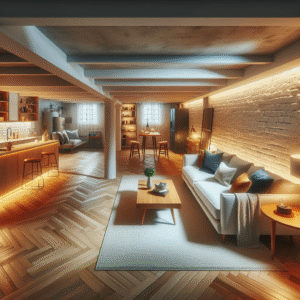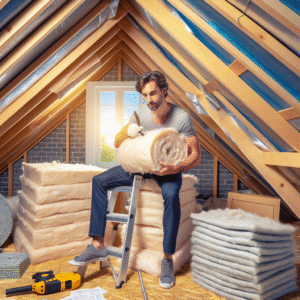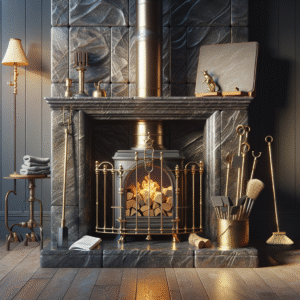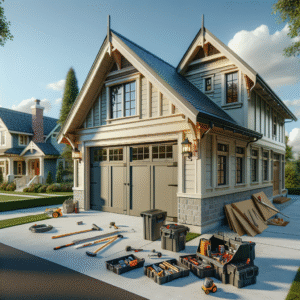Exploring the Versatile World of Stucco for Home Exteriors
If you’re considering a fresh look for your home’s exterior, stucco might just be the perfect option. Known for its durability, versatility, and aesthetic appeal, stucco has been a favored choice for centuries. In this detailed guide, we’ll delve into the different types of stucco, explore its numerous benefits, and offer essential tips for maintenance and repair. Whether you’re a homeowner looking to upgrade your façade or a curious contractor, understanding the ins and outs of stucco will help ensure your exterior projects stand out and stand the test of time. So, let’s get started on transforming your home with this robust material!
Understanding Stucco: Types and Benefits for Home Exteriors
Stucco is not just a single material but a blend of various compounds that create a strong, weather-resistant exterior coating. Traditionally, it involves a mixture of cement, lime, sand, and water, applied in several layers over a lath base. However, modern advancements have introduced acrylic and synthetic stucco, offering enhanced flexibility and color retention. Each type of stucco has its unique properties and benefits:
- Traditional Stucco: Known for its classic appeal and longevity.
- Acrylic Stucco: Offers more vibrant color choices and is less prone to cracking.
- Synthetic Stucco: Provides excellent insulation properties and resistance to mold and mildew.
Beyond its variety, stucco’s benefits are vast, making it an excellent choice for any home. It’s highly durable, fire-resistant, and provides superb insulation, helping to keep your home cooler in summer and warmer in winter. Additionally, stucco’s texture can be customized, from smooth finishes to rough textures, fitting any architectural style.
Essential Maintenance Tips for Stucco Longevity
Maintaining your stucco exterior not only keeps it looking great but also extends its lifespan. Regular inspections and upkeep are crucial:
- Regular Cleaning: Gently wash your stucco to remove dirt and debris.
- Crack Monitoring: Keep an eye out for cracks and address them promptly to prevent water infiltration.
- Sealing: Apply sealant around windows and doors to prevent moisture entry.
Professional Stucco Repair and When to Seek Expert Help
While some minor stucco repairs can be a DIY project, significant damages often require professional attention. Knowing when to call in experts can save you time and ensure a high-quality finish. Major cracks, extensive water damage, or structural issues are signs that it’s time to consult a professional. They can provide specialized services like stucco remediation, which addresses underlying problems, not just superficial damages.
Whether you’re maintaining your home’s stucco or considering it for your next project, understanding these essentials will help ensure your home’s exterior is both beautiful and durable. Remember, a well-maintained stucco finish not only enhances curb appeal but also increases the value of your property.

If you’re ready to take your home improvement or construction project to the next level, we can help! Find trusted contractors on BuildNet, whether you’re looking for renovations, new builds, electrical work, plumbing, or anything in between. Our directory connects you with qualified professionals who can make your vision a reality.
Understanding Stucco: Types and Benefits for Home Exteriors
Hey there! If you’re considering giving your home a makeover, or simply curious about different siding options, let’s talk about one of the most popular choices out there: stucco. Renowned for its durability and aesthetic flexibility, stucco has been a favorite among homeowners for generations. Whether you’re in sunny California or up in the brisk Northeast, understanding stucco can help you make an informed decision for your home’s exterior. So, let’s dive into the world of stucco, explore its types, and uncover the benefits it brings to the table.
What Exactly is Stucco?
Stucco is a type of plaster made from cement, sand, and lime, applied in several layers over a lath base. It provides a solid, durable, and seamless home exterior. Often used in architectural styles ranging from Spanish to modern minimalist, stucco can be tailored to many design aesthetics, which partly explains its popularity.
Types of Stucco Explained
Understanding the different types of stucco can help you choose the right one for your home. Generally, stucco comes in two main varieties:
Traditional Hard Coat Stucco
This is the classic stucco that has been used for centuries. It’s known for its robustness and longevity. Traditional stucco is a three-coat process involving:
- The scratch coat: Applied directly onto the metal lath, this layer creates the base.
- The brown coat: This middle layer smooths out imperfections and provides the bulk of the stucco thickness.
- The finish coat: The top layer, which is available in different textures and colors.
Hard coat stucco is admired not only for its classic look but also for its ability to stand up to the elements and provide insulation.
Synthetic Stucco (EIFS)
Exterior Insulation and Finish Systems (EIFS) are a lighter stucco system often referred to as synthetic stucco. They consist of:
- An insulation board: Secured to the exterior wall surface, usually with adhesive.
- A base coat: Applied over the insulation and reinforced with fiberglass mesh.
- A finish coat: This is the textured, colored top coat that is visible.
Synthetic stucco is particularly valued for its excellent insulation properties and its versatility in design. However, it requires precise installation and moisture management to prevent issues.
Benefits of Stucco for Home Exteriors
So, why choose stucco for your home exterior? Here are some compelling reasons:
Durability
Both traditional and synthetic stucco are famed for their durability. Properly applied stucco can last up to 50 years without needing replacement. It’s resistant to fire, rot, and pests, making it an excellent long-term investment for your home’s exterior.
Energy Efficiency
Thanks to its insulative qualities, stucco plays a significant role in reducing energy costs. It keeps homes cooler in the summer and warmer in the winter, reducing the need for heating and cooling. This is particularly true for EIFS, which includes an additional layer of insulation.
Low Maintenance
Once stucco is installed, it requires minimal upkeep. It doesn’t need to be painted frequently, and repairs are generally straightforward if they’re needed at all. A simple wash with a hose will often be enough to keep your stucco looking fresh.
Aesthetic Versatility
Want a textured look? Prefer something smooth? Stucco can be finished in many ways, offering an array of textures and a virtually limitless color palette. Whether you’re looking for a rough, rustic feel or a sleek, modern appearance, stucco can be customized to suit your style preference.
Sound Damping
Stucco’s density makes it excellent for reducing sound transmission. If you live near a busy street or in a noisy neighborhood, stucco can help keep your home quieter.
Local Adaptation and Expert Installation
It’s essential to consider your local climate when choosing stucco. In areas with high moisture, proper installation and waterproofing are crucial to prevent moisture intrusion. Always seek out experienced local contractors who know how to handle stucco in your specific environment.
Stucco might just be the perfect option for giving your home not only an aesthetic lift but also a functional upgrade. With its impressive list of benefits and versatile appeal, stucco continues to be a top choice for homeowners across the globe. So, whether you’re in a quaint suburban neighborhood or the heart of a bustling city, stucco can adapt to your needs, enhancing your home’s exterior with style and resilience.
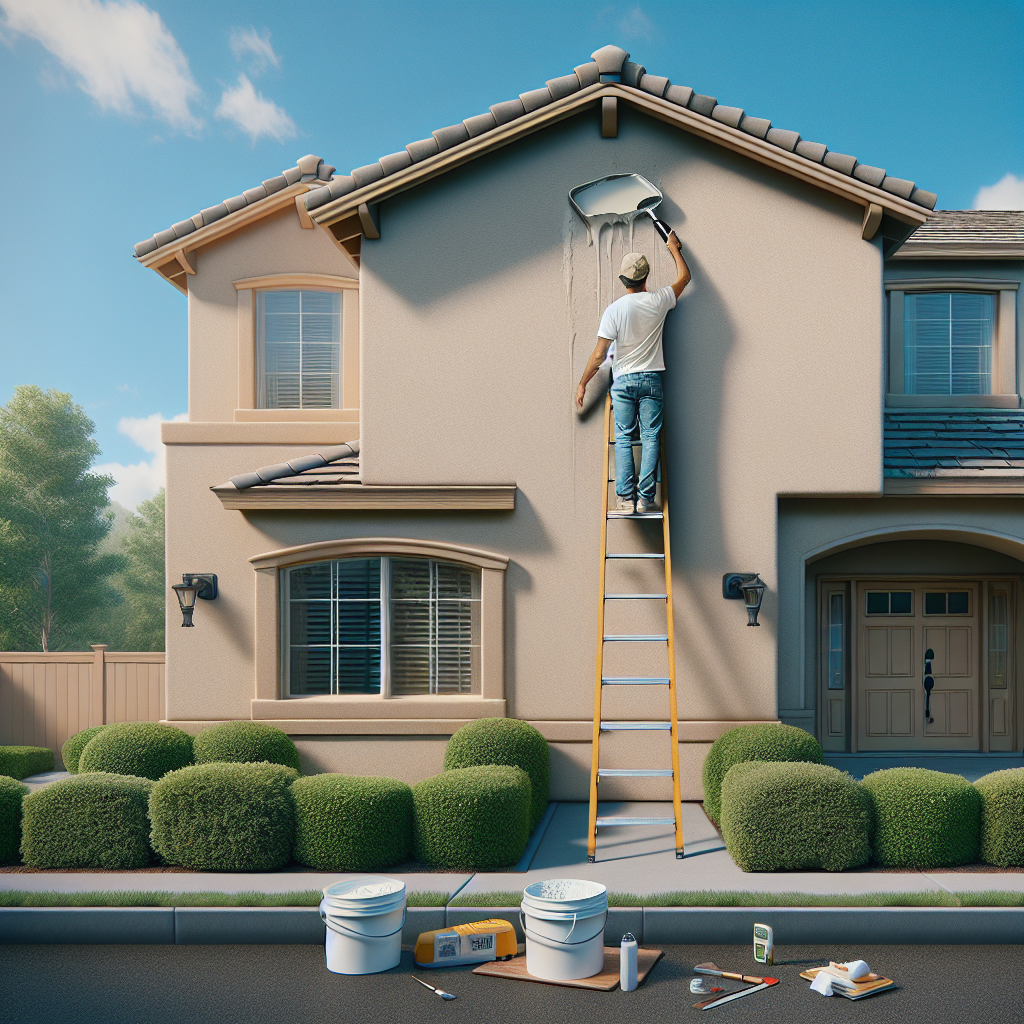
Essential Maintenance Tips for Stucco Longevity
Welcome to our expert guide on maintaining your stucco exterior! If you’re the proud owner of a home with stucco finishing, you already appreciate its aesthetic appeal and durability. But like any significant investment, stucco requires care to ensure it stands the test of time and the elements. Let’s dive into some essential maintenance tips that will keep your stucco looking pristine and protect your home’s curb appeal.
Regular Cleaning: Keeping Your Stucco Sparkling
First things first, keeping your stucco clean is not just about aesthetics; it’s about longevity. Dirt, grime, and pollutants can settle into the texture of stucco and start to degrade the material over time. Here’s how to keep it clean:
- Gentle Washing: Use a garden hose with a nozzle that provides a gentle spray to wash off the surface. High-pressure washers can be too harsh and might actually cause damage.
- Soft Brushes: For areas with stubborn dirt, use a soft-bristled brush. Harsh scrubbing can create pits or scratches where moisture can accumulate and cause damage.
- Mild Cleaning Solutions: If water isn’t enough, mix a mild, non-acidic soap with water for cleaning. Chemical cleaners can react adversely with the stucco and discolor or weaken it.
Crack Inspection and Management
Cracks in stucco can be more than just unsightly; they can be an invitation for serious problems like water ingress and structural damage. Here’s how to tackle them:
- Regular Inspection: Make it a habit to inspect your stucco surface for cracks, especially after extreme weather conditions like freeze-thaw cycles or heavy storms.
- Seal Promptly: Small hairline cracks can often be sealed with high-quality caulk to prevent water from seeping behind the stucco. Ensure the caulk is paintable if your stucco is painted.
- Monitor Repairs: After repairing cracks, keep an eye on them to make sure the fix holds. If the same areas keep cracking, it might indicate a deeper structural issue.
Addressing Water Damage
Stucco’s arch-nemesis is water. Prolonged exposure to moisture can lead to serious damage. Prevent and address water damage by:
- Ensuring Good Drainage: Make sure that your home’s gutters and downspouts are clear and functioning. Water should be directed away from the foundation to prevent pooling and seepage.
- Checking Flashings: Flashings around windows, doors, and roof intersections should be intact and free of rust or gaps. They play a crucial role in keeping water out of stucco walls.
- Dealing with Stains: If you notice staining, it might be due to water penetration. Address stains quickly to prevent long-term damage. Sometimes, professional cleaning or a fresh coat of paint after repairs might be necessary.
Preventing Mold and Mildew
Mold and mildew are not only health hazards but can also weaken your stucco from the inside. Here are tips to keep them at bay:
- Enhance Air Circulation: Good ventilation prevents moisture buildup which is a breeding ground for mold. Ensure that your home’s vents are not obstructed.
- Use Mold-Inhibiting Products: When painting or sealing stucco, choose products that contain mold inhibitors to add an extra layer of protection.
- Address Leaks Immediately: Be vigilant about water leaks from pipes or roofs, as these contribute significantly to mold growth. Early action can prevent widespread mold issues.
Painting and Coating for Extra Protection
Aside from adding a touch of beauty, paints and coatings can provide an extra shield for your stucco. Consider the following:
- Choosing the Right Paint: Use breathable, water-resistant paints designed specifically for stucco. These allow moisture to escape from the walls while blocking rainwater from entering.
- Applying a Primer: A good primer can enhance the paint’s adhesion and increase the longevity of your stucco’s appearance.
- Regular Touch-Ups: Keep some leftover paint for quick touch-ups after repairing any cracks or damages. This keeps your exterior looking uniform and well-maintained.
Seasonal Considerations
Different seasons bring different challenges for stucco maintenance:
- Spring: Check for damage from winter, clean gutters, and prepare for rainier months.
- Summer: Focus on mitigating heat exposure and UV damage. Consider applying a UV-resistant coat if your region experiences intense sun.
- Fall: Clear debris and leaves from gutters and inspect for any cracks that need sealing before winter.
- Winter: Ensure all cracks and openings are sealed to prevent cold air and moisture from entering.
With these tips, your stucco home will not only look fantastic but will continue to serve as a durable, beautiful facade for years to come. Remember, a little care goes a long way, and timely maintenance can save you from costly repairs in the future.
Professional Stucco Repair and When to Seek Expert Help
Hello there! If you’ve got stucco as part of your home’s exterior, you understand its aesthetic appeal and durability. But even the toughest materials need a little TLC sometimes. Today, let’s chat about when and why you might need to call in the professionals for stucco repair. Whether you’re noticing a few small cracks or dealing with more severe damage, knowing how to proceed can save you time and money in the long run.
Identifying the Need for Professional Stucco Repair
First things first, let’s talk about what signs indicate that it’s time to move past DIY fixes and call in the experts:
- Large Cracks: Tiny hairline cracks might not be a big deal and can often be handled on your own, but if you’re seeing cracks that are wider than 1/16 inch, it might be time to call in a professional. These larger cracks can indicate underlying issues that need more than just surface treatment.
- Water Damage: Stucco is great for many climates, but persistent moisture can be its downfall. Signs of water damage, such as staining or mold, usually suggest that there’s a deeper problem, possibly with your building’s waterproofing.
- Bulging or Crumbling: If areas of your stucco are bulging or crumbling, get on the phone with a pro. This can indicate structural issues that, if not addressed quickly, could lead to significant damage.
If you observe any of these issues, or if your stucco just hasn’t been inspected in a while, it’s a good idea to bring in someone with a keen eye for potential problems.
Choosing the Right Professional for the Job
Finding the right contractor can be a little daunting, but it’s crucial for ensuring your stucco gets the best possible care. Here’s what to keep in mind:
- Specialization: Look for a contractor who specializes in stucco repair. They’ll have the specific knowledge and tools to effectively address your stucco issues.
- Reviews and References: Check out online reviews and ask for references. A reputable contractor will be happy to share success stories and customer testimonials.
- Licensing and Insurance: Ensure any contractor you consider is licensed and insured. This protects both you and them during the repair process.
- Detailed Quotes: A professional should provide a detailed quote that outlines the scope of the work, the materials used, and the expected timeline. This transparency helps avoid any unexpected costs or delays.
Don’t be shy about asking potential contractors plenty of questions about their process and previous work. A trustworthy professional will be transparent and eager to put your mind at ease.
What to Expect During Stucco Repair
Once you’ve found the right contractor, understanding the repair process can help you manage expectations and ensure smooth sailing. Here’s a general outline of what might happen:
- Inspection: A thorough inspection is typically the first step. This helps the contractor identify all areas of concern, including hidden damage you may not have noticed.
- Preparation: Before the actual repair starts, the area will need to be prepared. This might involve cleaning the stucco, removing loose material, and setting up scaffolding if necessary.
- Repair: The type of repair will depend on the damage. It could be as simple as filling cracks or as involved as removing sections of stucco and applying a new coat.
- Color Matching: If new stucco is applied, your contractor should be able to match the color and texture of the existing material, ensuring that the repairs blend seamlessly with the rest of your exterior.
- Final Inspection and Cleanup: After the repair work is completed, a good contractor will conduct a final inspection to ensure everything is up to par. They should also clean up the work area, leaving it as neat as they found it.
Throughout this process, your contractor should keep you informed and feel comfortable answering any questions that arise. After all, they’re not just fixing your stucco—they’re helping to preserve your home’s beauty and structural integrity.
Getting the Most Out of Your Stucco Repair
To make the most of your stucco repair, consider these final tips:
- Regular Checks: Even after a professional repair, keep an eye on your stucco’s condition and monitor for any new issues.
- Immediate Action: If you notice new damage, address it promptly to prevent more complex problems down the road.
- Maintenance Advice: Ask your contractor for tips on maintaining your stucco. They can provide valuable insights on protecting your investment.
Remember, the goal is not just to fix your stucco, but to ensure it continues to protect and enhance your home for years to come. With the right professional help, you can achieve just that!

What is Stucco and What Are Its Types?
Stucco is a popular exterior finish for homes, known for its durability and aesthetic appeal. It typically consists of cement, lime, and silica, applied in several layers over a lath base. There are two main types of stucco:
- Traditional Stucco: Made with cement, sand, lime, and water. It’s known for its robustness and can be textured in various ways.
- Synthetic Stucco: Also known as Exterior Insulation and Finish Systems (EIFS), it includes layers of foam insulation board, base coats, and finish coats. Synthetic stucco is lighter and has better insulation properties.
What Are the Benefits of Using Stucco for Home Exteriors?
Stucco isn’t just popular for its classic look; it also offers multiple benefits:
- Durability: When properly maintained, stucco can last 50 to 80 years.
- Insulation: Provides excellent thermal resistance, helping in energy savings.
- Fire Resistance: Stucco provides a one-hour fire resistance rating.
- Aesthetic Flexibility: Can be finished in various textures and colors, fitting any architectural style.
How Should I Maintain My Stucco Exterior?
Proper maintenance is key to prolonging the life of your stucco. Here are some tips:
- Regular Cleaning: Use a garden hose to clean stucco. Avoid high-pressure washers which can damage the surface.
- Crack Monitoring: Check for cracks and seal them promptly to prevent water ingress.
- Proper Drainage: Ensure that the ground around your home slopes away to prevent water pooling.
When Should I Call a Professional for Stucco Repair?
You should consider professional help if you notice:
- Large Cracks: Wider than 1/8 inch or multiple smaller cracks indicating underlying issues.
- Water Damage: Soft spots, mold or mildew growth on the inside of your home could imply water breaches.
- Staining: Stucco discoloration could be due to water issues or other environmental factors.
What Does Professional Stucco Repair Involve?
Professional stucco repair can range from simple patching to complete replacement, depending on the damage extent. Experts will:
- Assess the Damage: Determine the depth and cause of the issue.
- Choose the Right Approach: From filling cracks to replacing entire sections.
- Match the Finish: Ensure that the repair blends seamlessly with the existing stucco.
In conclusion, stucco is a fantastic choice for anyone looking to enhance their home’s durability and aesthetic appeal. Understanding the different types of stucco and their benefits, alongside regular maintenance, can help ensure that your home looks beautiful and stands strong for years. For any stucco repairs, large or small, it’s always wise to consult with a professional. This not only saves time but also ensures that the job is done right. If you’re noticing any signs of wear or damage on your stucco, don’t hesitate to reach out for expert advice. Visit the BuildNet website to find a trusted local contractor and get a free quote today. Remember, taking care of your home’s exterior not only preserves its value but also boosts its curb appeal, making it a pride of place to live.

